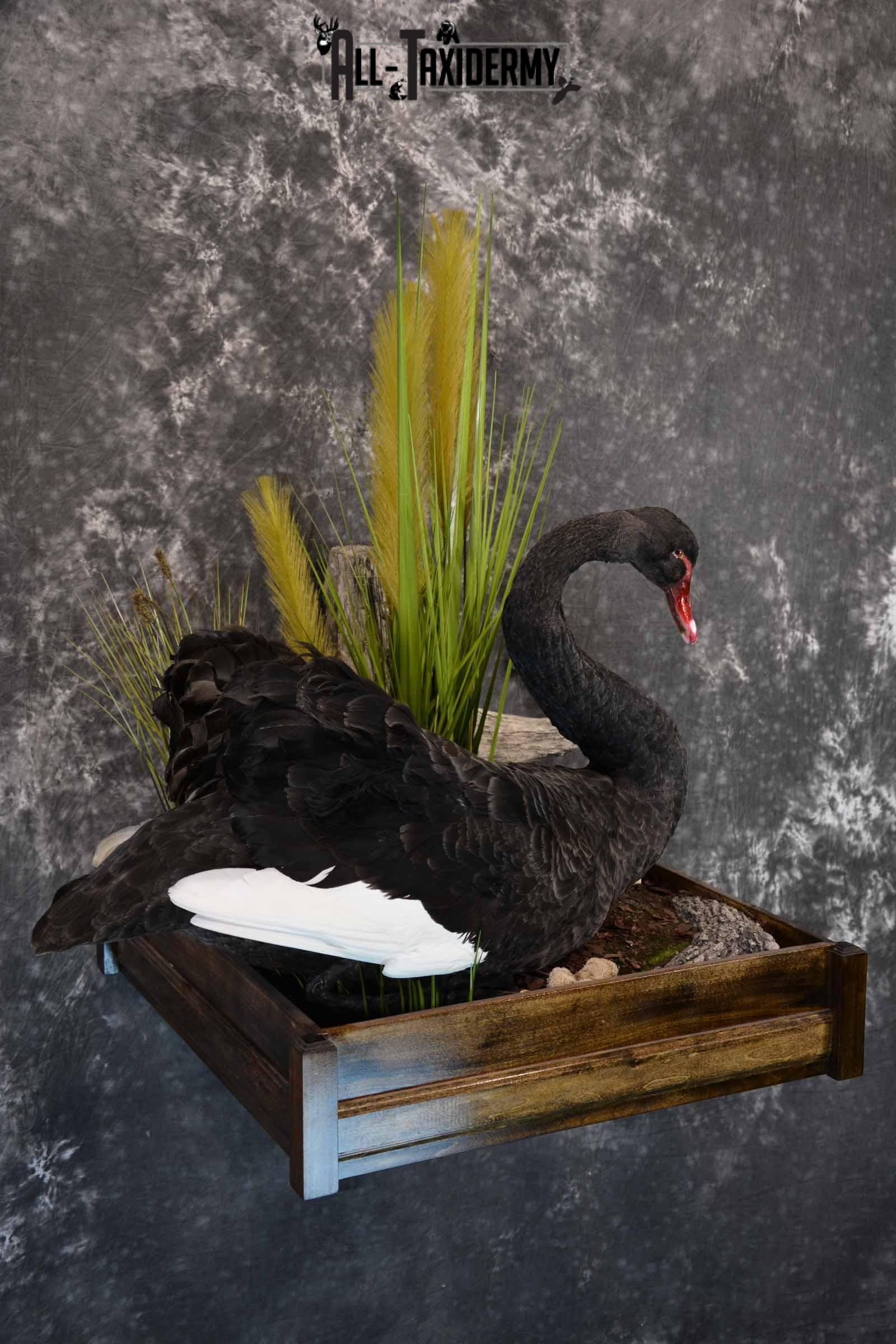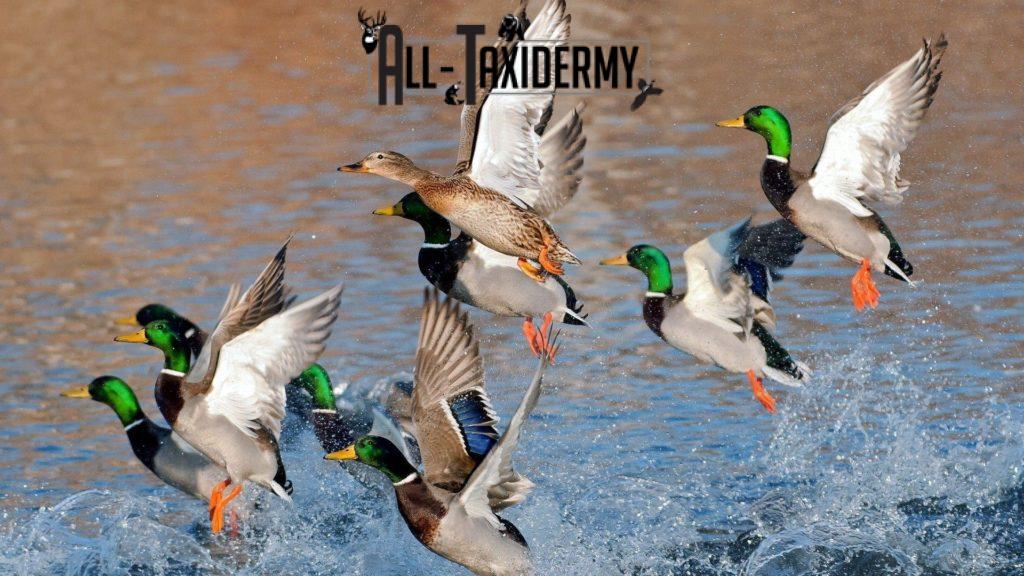Waterfowl Taxidermy Tips Overview
Bird taxidermy mounts make wonderful pieces of art for decorating your interior space, and while they are a financial investment, it’s an investment worth making when you see the impressive display of feathers hanging on your wall!
Bird game hunters love the thrill of hunting for Mallard Duck and various other game. However, if you are fond of game hunting, you can taxidermy your bird collection. In this post, our taxidermists will delve deeper into how you can taxidermy your waterfowl.
Understanding Waterfowl Taxidermy
The word taxidermy refers to the process of preserving the feathers and body of a live animal into a life-like artistic display. The word taxidermy comes from the Greek words taxis (meaning “arrangement”), and derma (meaning “skin”).
The process of taxidermy applies to not just birds – mammals, fish, reptiles, and amphibians are also commonly made into a taxidermy trophy display for the purposes of displaying on a cabin wall, or in an office, store, nature center, or museum exhibition. Taxidermy can be used as a way of preserving the animal for study purposes for schools or the general public, and even for personal reasons such as preserving a beloved pet.

Popular Waterfowl Game
Popular waterfowl species bird taxidermy enthusiasts hunt and/or collect include various species of duck, such as Mallard, Wood, Blue-winged and Green-winged Teal, Northern Pintail, Mandarin, and American Black ducks.
Other bird game include a wide variety of swan species such as the Bewick’s, Black, Black-necked, Mute, and Trumpeter swan; and goose species such as the Canada, Emperor, and Snow goose. Pictured here is a beautiful Black Swan displaying gorgeous black with white feathers and a striking red bill (SKU 1200).
Other waterfowl species include various types of crane like the Sandhill, Common, and Whooping crane and heron species like the Great blue heron, Grey heron, and the Great egret.
Now that we’ve covered some of the most popular waterfowl species, let’s talk a little bit about how to taxidermy a waterfowl bird:
Steps for How to Taxidermy a Waterfowl
Despite the relative use of hunting waterfowls, they are quite fragile to taxidermy. This is because the delicate feathers, bones, and beak can be rendered unusable due to rough handling. We recommend following the process below:
- When bird hunting, your game is likely to be soiled by the blood. If allowed to dry, it becomes almost impossible to restore the plumage to its original state. You should bring along a bottle of water, a ball of cotton wool, and a shallow dish. A small sable brush would also help in the cleaning.
- In an effort to keep the duck or other waterfowl as intact as possible, once you shoot the waterfowl, retrieve it yourself to eliminate the chances of a dog damaging it.
- Stuff the place you’ve shot using cotton wool to avert further bleeding. Once the bleeding stops, use the water and brushed to clean the soiled feathers.
- The most effective way of preparing your waterfowl for the taxidermy process is by freezing it on a block of ice. Put your bird in a Ziploc bag, and freeze it solid. This prevents the feathers from bending as well as the bones or beak from breaking. It also prevents oxygen from pulling out moisture from your game’s feathers and skin. Tucking your waterfowl’s head under a wing prevents the head and neck from accidentally breaking as your game freezes.
Tip: Avoid wrapping the waterfowl with a newspaper as this will draw out moisture from your game resulting in freezer burning.
By preserving your game in a freezer, it could last as much as 8 months. However, plan to get it to your taxidermist as soon as possible. If you can present the bird to your taxidermist within the first 48-hours, you only need to keep it in a refrigerator.
Skinning & Mounting your Waterfowl
Taking Measurements
Begin by taking measurements of the bird so that you retain as much of its life-like appearance as possible. By ignoring to do this, you could under or overstuff it. Lay the bird on its back and locate its breastbone.
Making the Incision
Use a razor blade or a knife to make an incision from the breast to the anus. Avoid using slicing motions to prevent cutting the feathers or tearing the flesh. A sharp blade should be able to make a single, continuous incision. Use a ball of cotton wool to absorb all fluids using cotton wool to avoid soiling and disfiguring the feathers.
Skinning the Bird
Begin skinning your waterfowl on either side of the incision. You can easily pry the skin from the body in the breast area. When skinning the area around the tail, ensure you do it in a way that leaves the tail quills intact. When you strip off the muscular portions of the legs, cut them off from the inside using a knife or a pair of scissors so that the feet are left attached to the skin. When skinning the wings, go as far as the elbow, taking care not to tear the skin or severing the bones.
Keep in mind that when working on the head, the eyes’ outer membrane should remain intact. Also, be careful not to break the delicate membrane that makes up the waterfowl’s ears.
Stuffing/Mounting
Next, it’s time to give it volume by stuffing it in a process referred to as mounting. You can use such items as polyurethane form, wool, wire, and clay, among other non-toxic materials. If possible, sew up the opening through which you have stuffed the waterfowl.
The first few waterfowls might prove quite frustrating to skin and mount. But with a few waterfowls under your belt, you will soon be skinning smaller birds including doves, teals, and even sparrows. Should you incorrectly cut a hole, try arranging the feathers around it as naturally as possible.
If you have questions on this process, or need the expert taxidermists at All-Taxidermy to provide insight into the bird preservation process, just give us a call at 888-983-3886.
Contact Us for Waterfowl Taxidermy Services
With years of professional experience, you can trust us to take care of your bird taxidermy project. From the skinning process, to the feather preservation, to the finishing touches of mounting the bird, All-Taxidermy has what it takes to make your duck, goose, swan, heron, crane, or other waterfowl look stunning.
We also have completed bird taxidermy available in our online store. Check out all our Excellent, Superior, and Trophy quality grade taxidermy. Our very best museum-ready pieces are in our Regal Wings Taxidermy collection. Albers & Co./All-Taxidermy is a member of the WTA (Wisconsin Taxidermists Association) and also SCI (Safari Club International). We stand behind the quality of our work, having ourselves been trained by world-class taxidermists.
Have questions about your project? Get started by giving us a call at 888-983-3886 or contact us here.

Mallard Drake Duck Taxidermy Bird Mount (SKU 1467)


